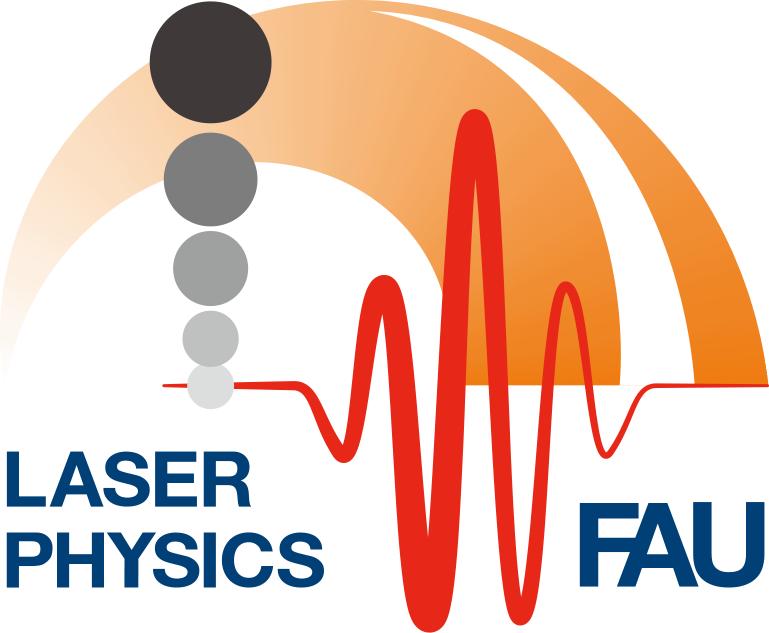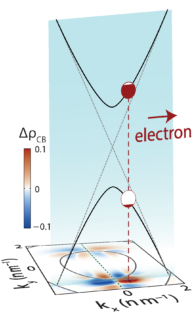Length-dependence of CEP-sensitive currents in graphene – accepted in Journal of Physics B
Graphene, the 2-dimensional semi-metallic material with negligible screening effects at optical frequencies, can withstand high laser intensities and is therefore ideally suited to extend strong-field physics to a new material class – to 2D materials and to conductors. We recently found that after the light-matter interaction with ultrashort intense laser pulses an asymmetric conduction band population remains, which results in a measurable current. In this new study, we present experimental data on carrier transport after current injection, which was done in collaboration with our colleagues from the Chair for Applied Physics (Prof. Heiko B. Weber). In a systematic study, we vary the micrometer distance between the light-induced current injection region and two adjacent metal contact electrodes. We observe a decreasing current with increasing contact distance and propose a second-order power law scaling. We expect that the experimental data presented will help future work to uncover transport behavior in this intriguing system. Our results have just been published in a joint focus issue on attosecond technology and science, which is edited by our colleagues Profs. Jens Biegert, Francesca Calegari, Nirit Dudovich, Fabien Quéré and Marc Vrakking. The manuscript is accessible here.

